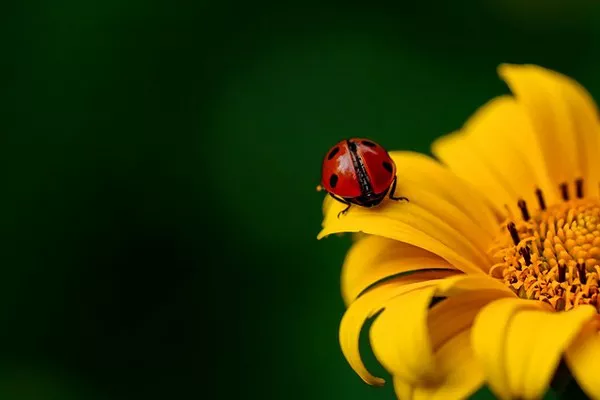Insects are remarkable creatures that play a crucial role in our ecosystems. While we often admire flowers for their beauty and fragrance, many insects view them as a sumptuous feast. From butterflies and bees to beetles and moths, these tiny diners have diverse preferences and feeding behaviors when it comes to flowers. In this comprehensive article, we will explore the intriguing world of insects and their dietary habits, focusing on what insects eat flowers and the ecological significance of their feeding behaviors.
The Appetizing Array of Flower Nectar
Flower nectar is a delectable and energy-rich substance secreted by flowers to attract pollinators. For many insects, such as bees and butterflies, nectar is a primary food source. These insects have specialized mouthparts, like proboscises or long tongues, which allow them to access nectar deep within the floral structures. As they lap up the nectar, they inadvertently transfer pollen from one flower to another, facilitating the essential process of pollination.
The mutualistic relationship between flowers and nectar-feeding insects is a cornerstone of ecosystem stability. Flowers benefit from increased cross-pollination, resulting in improved genetic diversity and healthier populations. In return, insects receive a nutritious meal to sustain their energy and reproductive processes.
Herbivorous Insects and Flower Consumption
While some insects dine on nectar, others are exclusively herbivorous, meaning they feed on plant matter, including flowers. Caterpillars, for example, are voracious consumers of various plant parts, including leaves and flowers. These young larvae of butterflies and moths can cause significant damage to flowers, especially when their populations surge.
Although the idea of insects devouring flowers might evoke concern among gardeners and nature enthusiasts, it is essential to recognize the ecological balance at play. Insects like caterpillars are a critical food source for many predators, including birds, mammals, and other insects. They are essential components of food webs, providing nourishment for a wide range of species. Thus, their feeding habits contribute to a harmonious ecological interdependence.
Nectar Robbers and Their Foraging Strategies
In the world of insects, there are clever foragers known as “nectar robbers.” These insects, which include bees and ants, have developed unique strategies to access floral resources without participating in pollination. Nectar robbers often create holes or slits in the flower’s corolla or petals, bypassing the reproductive structures and directly accessing nectar reserves.
While nectar robbing may seem like a selfish act, it also has ecological implications. These robbers can serve as secondary pollinators by accidentally transferring pollen while seeking nectar. Additionally, their actions may stimulate floral evolution, leading to changes in flower structure to deter nectar robbing and favor more efficient pollinators.
Predatory Insects and the Flower Prey
Insects are not limited to nectar and plant matter when it comes to flower feasts. Some species are predatory and have evolved to consume other insects that visit flowers. For instance, certain parasitic wasps and assassin bugs can be found lurking near flowers, awaiting an opportunity to ambush unsuspecting visitors.
These predatory insects contribute to natural pest control, helping to regulate insect populations and maintain ecological balance. While their actions may seem ruthless, they are essential to curbing potential outbreaks of herbivorous insects, which could otherwise lead to extensive damage to floral communities.
The Delicate Dance of Pollination and Coevolution
The relationship between insects and flowers is not merely a culinary affair; it is a delicate dance of pollination and coevolution. Flowers have evolved intricate shapes, colors, and fragrances to attract specific pollinators, while insects have developed specialized adaptations to exploit floral resources effectively. This coevolutionary dance has resulted in the remarkable diversity and complexity of floral structures and insect behaviors we observe today.
From the long-tongued proboscises of butterflies to the short mandibles of beetles, each insect’s feeding habits have shaped the floral world in unique ways. In turn, flowers have adapted their reproductive strategies to maximize pollination success. This interplay of adaptations has contributed to the astounding variety of flowers we see in different ecosystems worldwide.
The Impact of Human Activities on Flower-Feeding Insects
As human activities continue to reshape landscapes and alter natural habitats, the delicate balance between insects and flowers is at risk. Habitat loss, climate change, pesticide use, and invasive species all pose significant threats to insect populations and their access to floral resources. These changes can disrupt the pollination process and impact the reproduction of both flowers and insects.
Conservation efforts to protect native habitats, reduce pesticide use, and promote native plant species are crucial to maintaining the diversity of flower-feeding insects and the vital ecosystem services they provide. Furthermore, supporting and engaging in citizen science initiatives can contribute to better understanding the relationships between insects and flowers, aiding in the development of effective conservation strategies.
Conclusion:
The world of insects and their interactions with flowers is a fascinating tale of coevolution, adaptation, and ecological balance. From nectar-feeding pollinators to herbivorous caterpillars and predatory insects, each insect plays a vital role in shaping floral communities and maintaining the delicate balance of ecosystems.
While some insects may appear to be flower foes, their feeding behaviors contribute to the broader web of life, providing sustenance for other species and regulating insect populations. Understanding and appreciating the diverse dietary habits of insects can help us cultivate a deeper appreciation for the intricate beauty and functionality of the natural world.
As stewards of the environment, it is our responsibility to protect and conserve the habitats that sustain insect populations and foster interactions with flowers. By recognizing the importance of insect-plant relationships and implementing conservation measures, we can safeguard these fascinating culinary interactions and ensure the preservation of Earth’s rich biodiversity.


